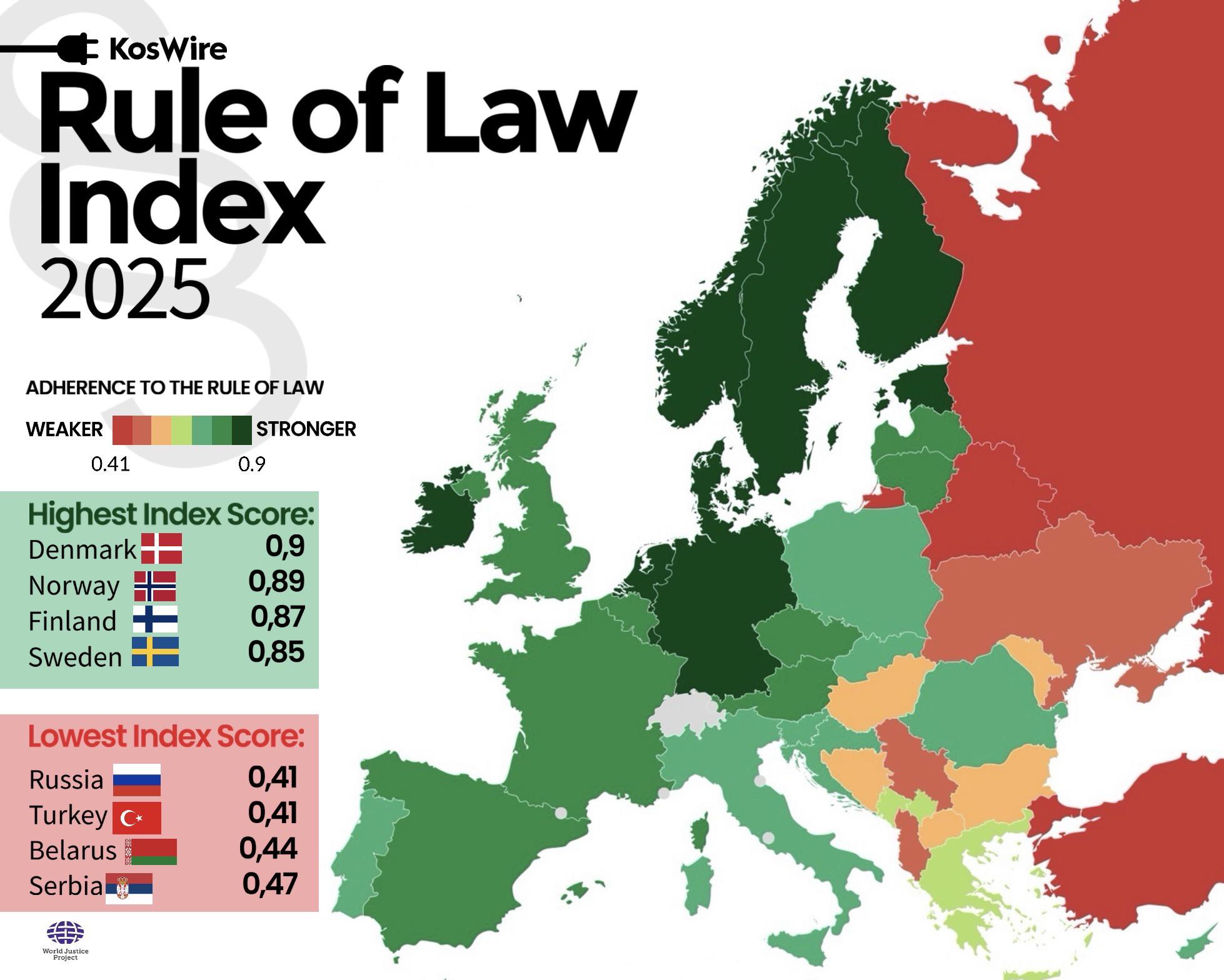Rule of Law Index 2025 Map


Marcus Rodriguez
Historical Geography Expert
Marcus Rodriguez specializes in historical cartography and geographic data analysis. With a background in both history and geography, he brings unique...
Geographic Analysis
What This Map Shows
The "Rule of Law Index 2025 Map" visualizes the effectiveness of legal systems across various countries, providing an overview of how well laws are enforced and how accessible justice is to citizens. This index measures multiple dimensions, including the accountability of government officials, the absence of corruption, and the protection of fundamental rights. By analyzing these factors, the map offers a comprehensive look at the health of legal frameworks worldwide, which is essential for assessing the overall governance and stability within nations.
Deep Dive into the Rule of Law
The rule of law is a cornerstone of democratic governance and a critical element in fostering economic development and social cohesion. It ensures that laws are applied equally and fairly, protecting citizens from arbitrary governance. The Rule of Law Index, developed by the World Justice Project, assesses countries through various metrics, including how laws are enforced, the accessibility of justice, and the independence of the judiciary. This index is not just an abstract concept; it has real-world implications that affect daily life, economic opportunities, and individual freedoms.
Interestingly, the map reveals significant disparities between countries. For instance, nations like Denmark and Norway consistently rank high, showcasing robust legal systems that uphold citizens' rights and diminish corruption. In contrast, countries facing political instability or conflict, such as Afghanistan and Venezuela, often score low, indicating a breakdown in legal structures and an increased risk of human rights violations.
What's fascinating is the connection between the rule of law and economic growth. Research indicates that countries with a strong rule of law experience higher levels of foreign investment and economic stability. Businesses feel secure when they know their contracts will be enforced, and their rights protected. Moreover, societies that uphold the rule of law tend to enjoy improved public health, education, and overall quality of life.
Regional Analysis
When we examine the map more closely, we can identify regional trends that offer insight into how different areas uphold the rule of law. For example, in North America, the United States and Canada rank relatively high, though there are ongoing discussions about systemic issues within the justice system, particularly regarding racial disparities and access to legal representation. Conversely, many Latin American countries struggle with corruption and ineffective law enforcement, leading to lower rankings. Countries like Brazil and Mexico face challenges from organized crime, which undermines public trust in legal institutions.
In Europe, the Nordic countries consistently lead the index, thanks to their comprehensive legal frameworks and transparency. Meanwhile, Eastern European nations like Hungary and Poland have seen a decline in their rule of law scores, raising concerns about government overreach and judicial independence.
In Asia, the picture is mixed. Countries like Japan and South Korea rank high, reflecting strong legal systems, while others, such as Myanmar and Afghanistan, face significant challenges. These variations highlight the complex interplay between culture, governance, and the enforcement of laws.
Significance and Impact
Understanding the rule of law is vital not only for policymakers but for citizens worldwide. A robust legal system promotes stability and trust, creating an environment where individuals can thrive. Conversely, weak rule of law can lead to unrest, as citizens may feel powerless against abuses of power and corruption. The implications are far-reaching, affecting everything from economic investment to social justice.
As we look to the future, it’s essential to recognize trends that may influence the rule of law. For instance, the rise of technology and digital governance presents both opportunities and challenges. While technology can enhance access to justice, it also raises concerns about privacy and surveillance. Moreover, global crises, such as climate change and public health emergencies, may test the resilience of legal systems.
In conclusion, the "Rule of Law Index 2025 Map" not only highlights which countries uphold the rule of law but also serves as a reminder of the ongoing struggles many face in their pursuit of justice. As global citizens, understanding and advocating for stronger legal frameworks can lead to a more equitable world for everyone.
Visualization Details
- Published
- October 31, 2025
- Views
- 2
Comments
Loading comments...